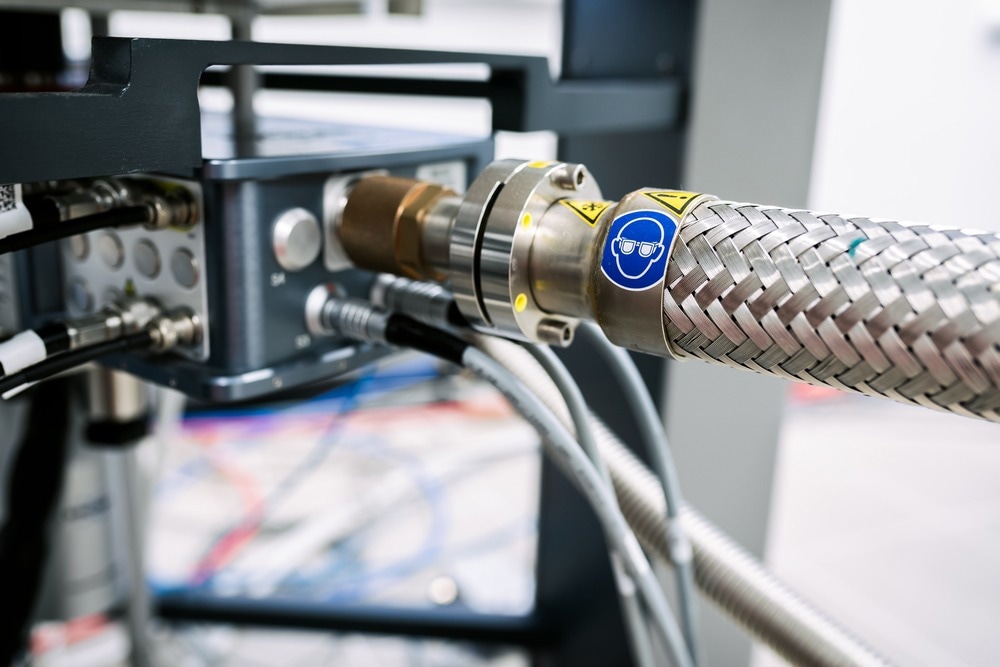Second-order surface-specific nonlinear optical spectroscopy, such as sum-frequency spectroscopy, has been a valuable tool for uncovering microscopic surface and interface structures since the 1990s.

Image Credit: Forance/Shutterstock.com
However, it has been traditionally limited to the visible to mid-infrared spectral range (greater than 20 THz). Yet, the terahertz range is of paramount importance for studying lattice vibrations, molecular vibrations, quasi-particles, and fundamental excitations in various materials.
Sum-frequency generation is ineffective in this terahertz range due to the absence of a powerful terahertz source, and even if one were available, it would be challenging to separate the weak sum-frequency signal from the intense visible pump light due to their nearly identical frequencies.
A recent collaborative effort between researchers from Fudan University, the University of California, Berkeley, and ShanghaiTech University has introduced a novel method to extend surface-specific nonlinear optical spectroscopy into the terahertz region. They achieved this using the intra-pulse difference frequency mixing (DFM) process, boasting detection sensitivity as high as sub-monolayer levels.
In contrast to conventional sum-frequency spectroscopy (SFS), difference frequency spectroscopy (DFS) offers significant advantages in the terahertz range. It does not rely on a powerful terahertz source and benefits from a substantial frequency separation between the terahertz signal and the pump light, making detection much more straightforward.
The research team employed a femtosecond pulse as the pump and detected the terahertz emission using state-of-the-art electro-optic sampling techniques, achieving submonolayer sensitivity. As a proof of concept, they examined the SrTiO3(001) surface, known for its multifunctional properties and the precision of atomic-level fabrication and modification.
The study demonstrated that surface-specific nonlinear terahertz spectroscopy can selectively characterize the polarized phonon modes at the surface or interface of SrTiO3(001).
Through symmetry analysis and appropriate polarization selection, the researchers were able to selectively investigate the polarized phonons of SrTiO3(001) or the Drude-like nonlinear response from the two-dimensional electron gas at the LaAlO3/SrTiO3 and Al2O3/SrTiO3 interfaces.
Utilizing quantitative THz spectrum analysis, the research team established an optical protocol for remotely measuring the interfacial potential of complex oxides under non-vacuum or buried conditions.
In summary, terahertz DFS presents new opportunities for in situ exploration of low-frequency excitations at the interfaces of complex oxide heterostructures.
This capability to resolve low-frequency collective excitations at the surface or interface with monolayer sensitivity can be readily extended to various disciplines, including the study of hydrogen-bond network structures, the investigation of frustrated vibrations of physisorbed species on metal oxides in catalytic reactions, and more.
Journal Reference
Su, Y., et al. (2023) Probing Interface of Perovskite Oxide Using Surface-Specific Terahertz Spectroscopy. Ultrafast Science. doi.org/10.34133/ultrafastscience.0042.